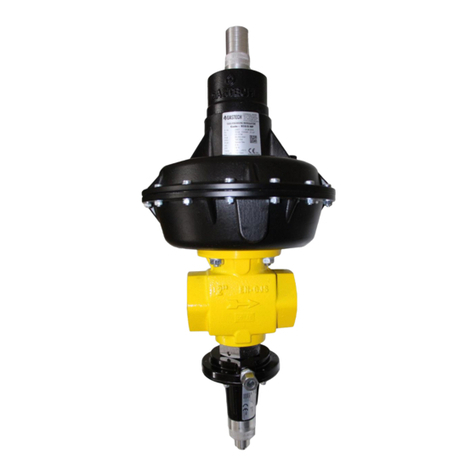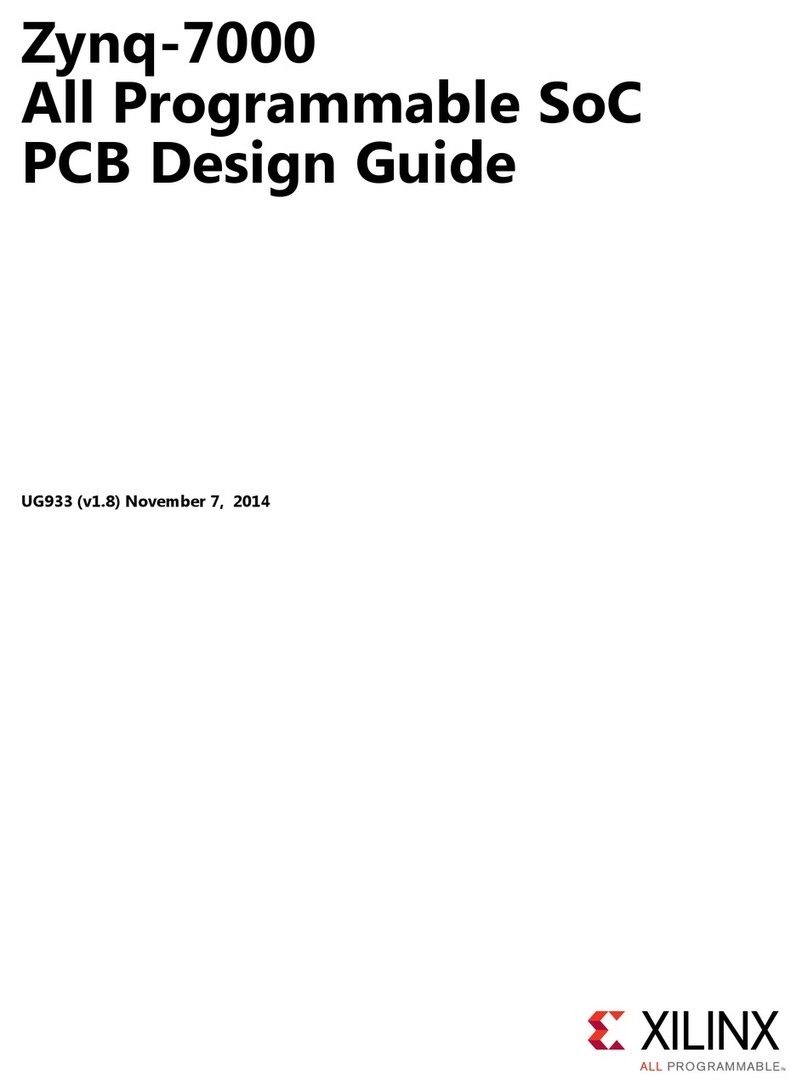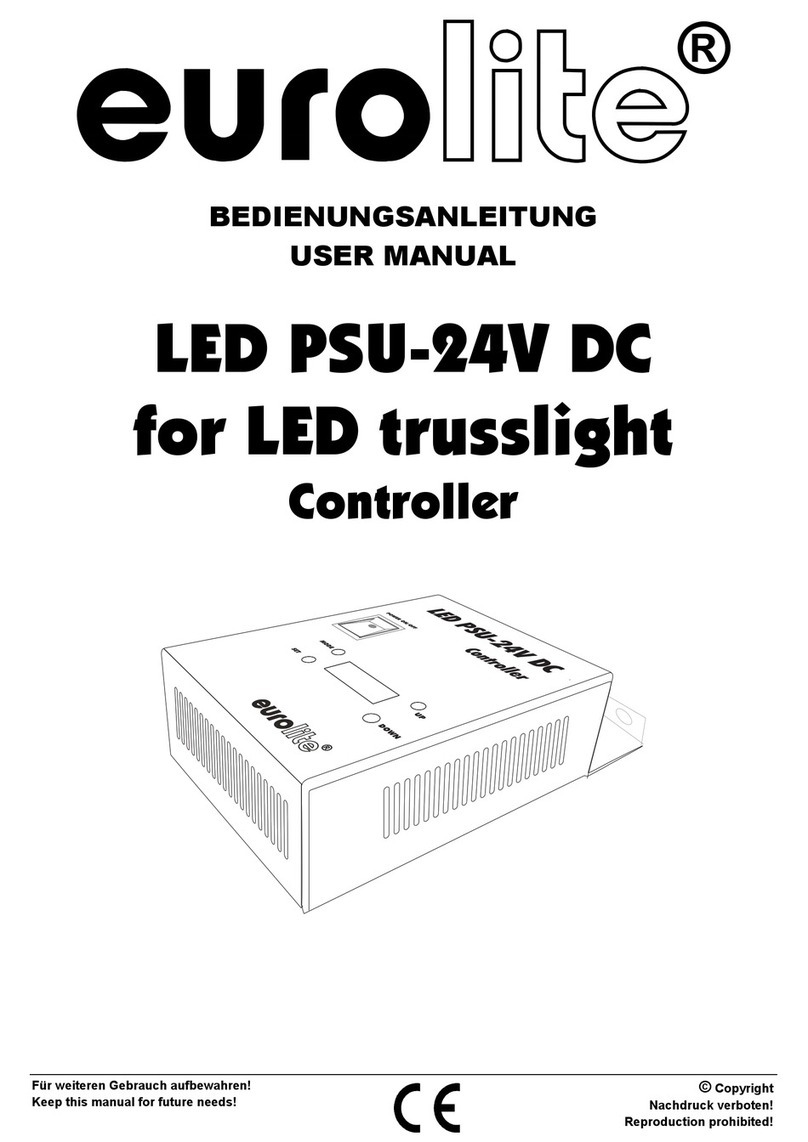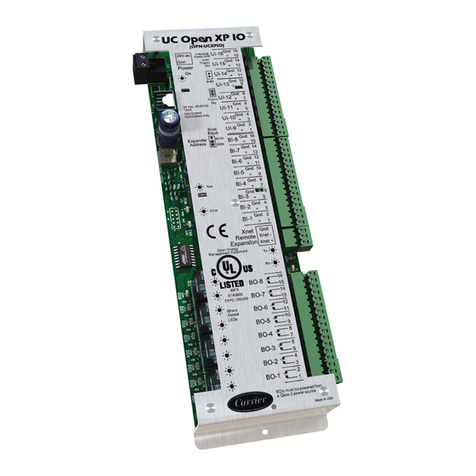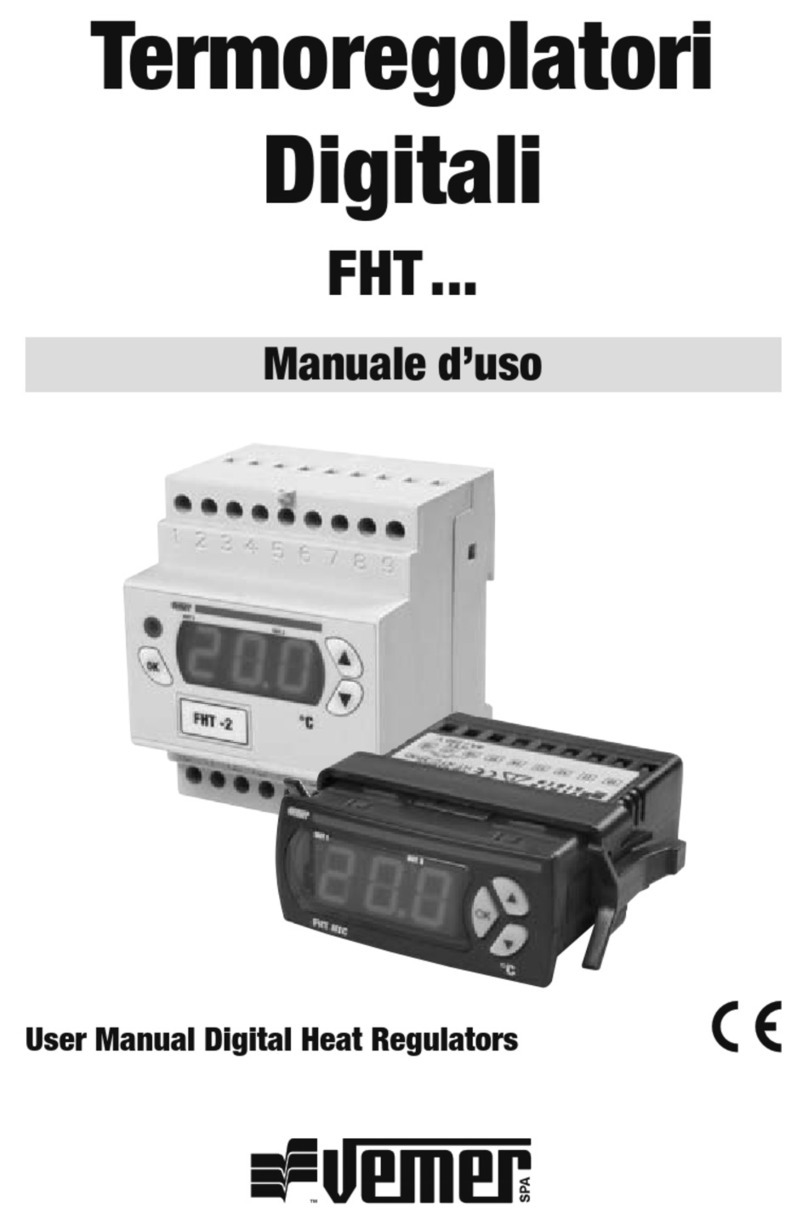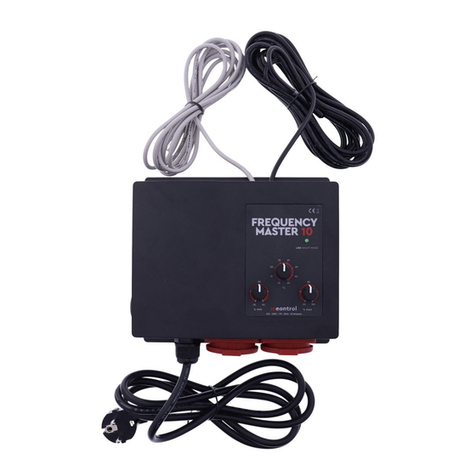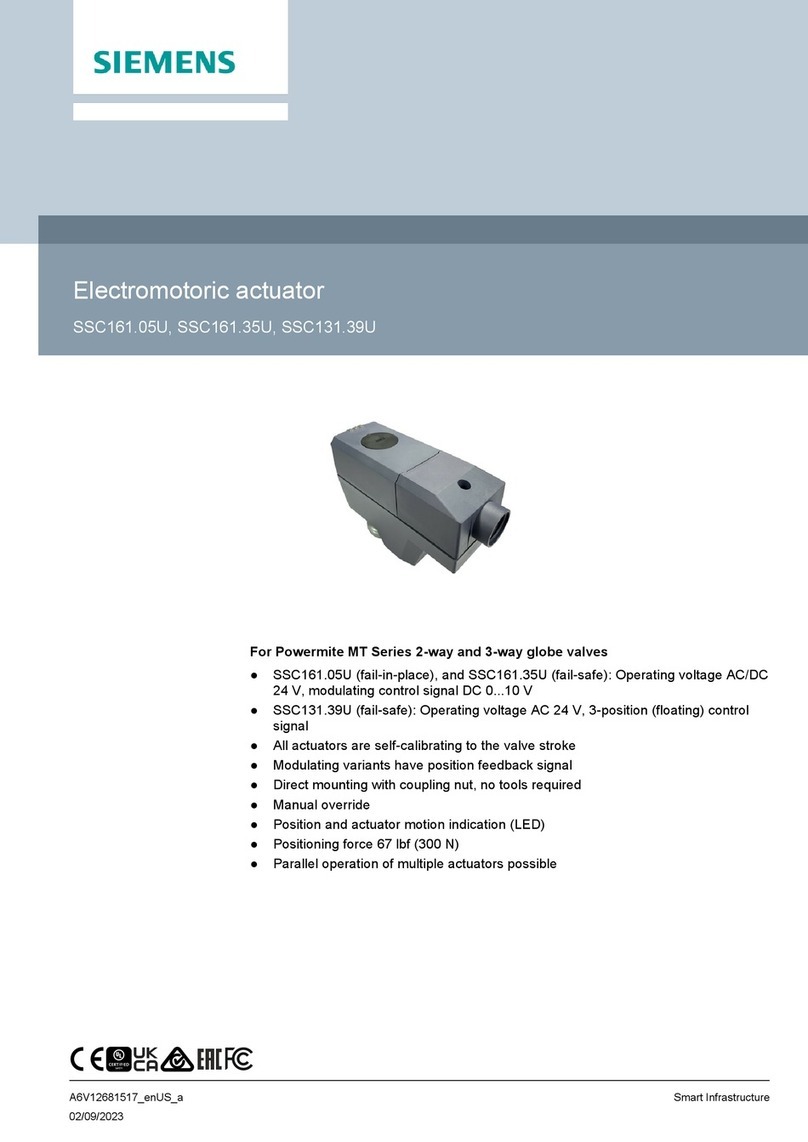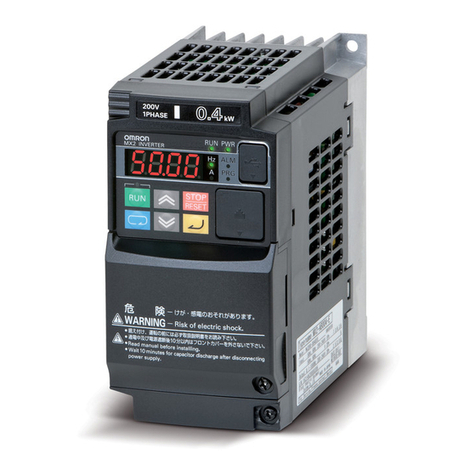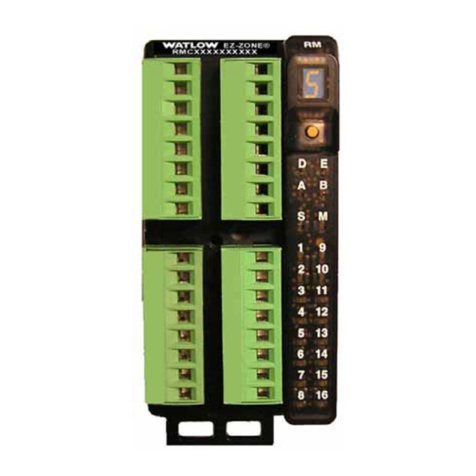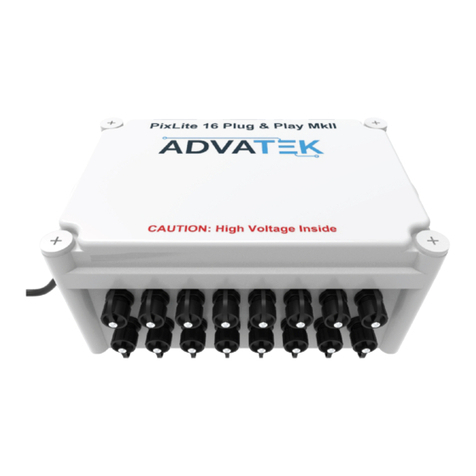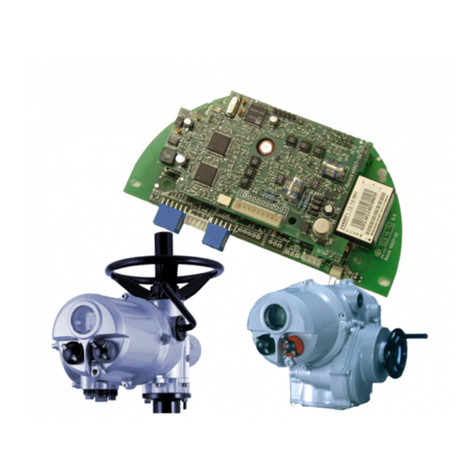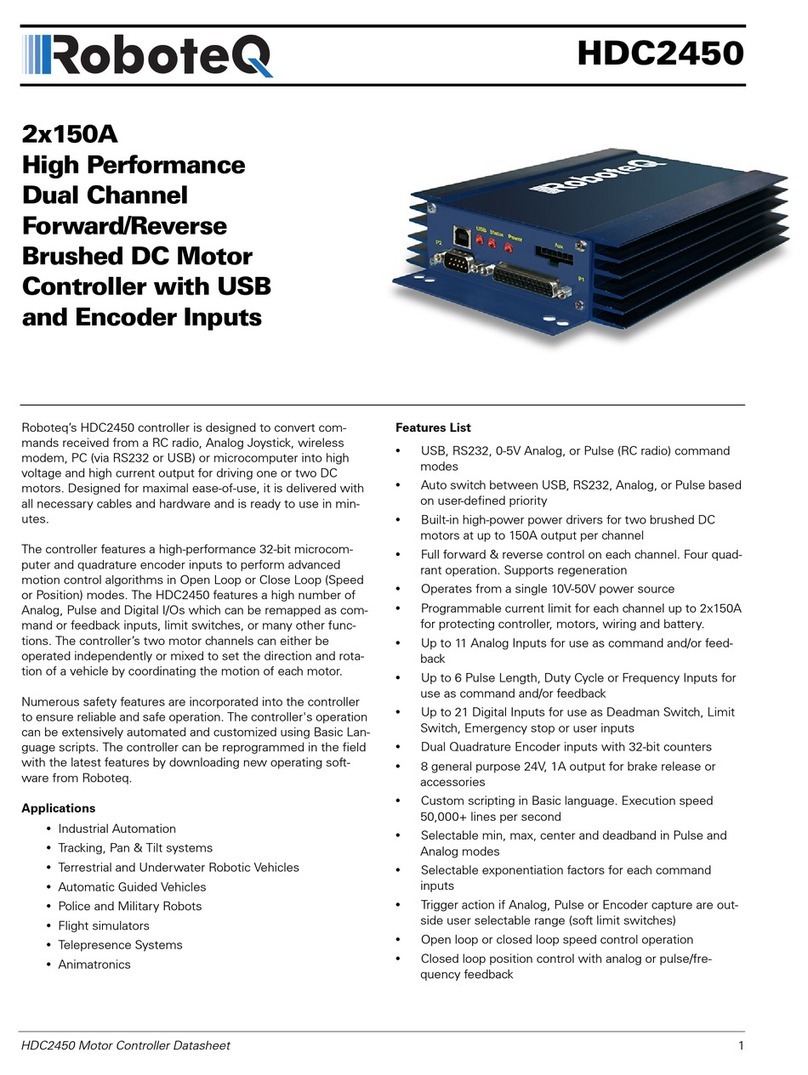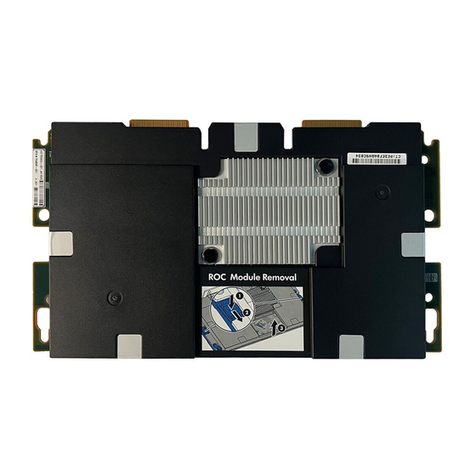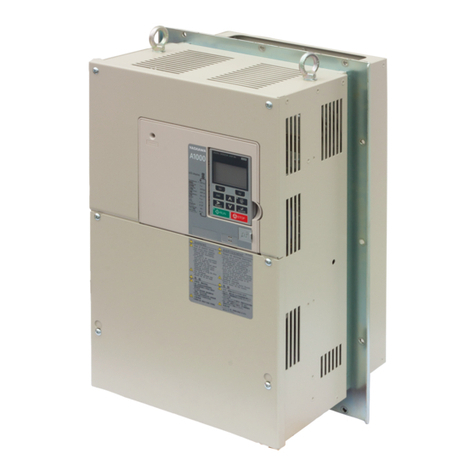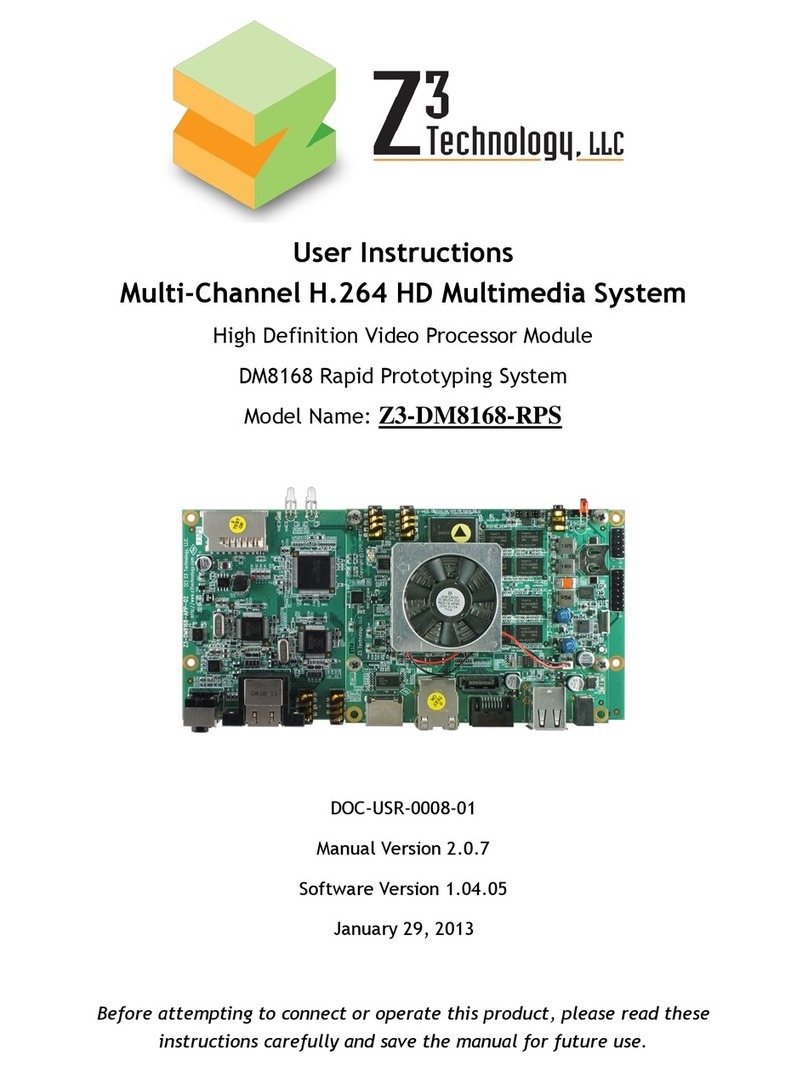GasTech GTA-4100R User manual

t +61 8 6108 0000 e info@gastech.com w gastech.com
GTA-4100R
Dual Processor Controller Card
OPERATOR’S MANUAL

GTA-4100R
Dual Processor, Dual Channel Controller Card
Part Number 73-4100R
Manual Re ision 6.41 (updated 5 December 2012)


Table of Contents
1
Introduction ................................................................................................................................................... 6
1.1
Features ................................................................................................................................................ 6
1.2
Front Panel Layout ................................................................................................................................ 7
2
Installation ..................................................................................................................................................... 8
2.1
Mounting ............................................................................................................................................... 9
2.1.1
Micro Rack
TM
..................................................................................................................................... 9
2.1.2
Standard 19” Rack............................................................................................................................. 9
2.2
Wiring .................................................................................................................................................. 10
2.2.1
Common Module ............................................................................................................................ 11
3
Configuration ............................................................................................................................................... 14
3.1
Isolate Mode ....................................................................................................................................... 14
3.2
Configuration & Programming ............................................................................................................ 15
3.2.1
Board Layout ................................................................................................................................... 16
3.2.2
Extender Card ............................................................................................................................... 167
3.2.3
Output Power Supply ...................................................................................................................... 17
3.2.4
Sensor Voltages .............................................................................................................................. 18
3.2.5
Relay Configuration ........................................................................................................................ 20
3.2.6
Switch Bank 1 .................................................................................................................................. 21
3.2.7
Switch Bank 2 .................................................................................................................................. 22
3.2.8
Setting the Range ............................................................................................................................ 23
3.2.9
Setting the Units of Measurement ................................................................................................. 25
3.2.10
Setting Alarms ................................................................................................................................. 26
3.2.11
Gain and Offset Settings ................................................................................................................. 27
3.3
Settings Summary Table ...................................................................................................................... 28
3.4
Configuration Examples ...................................................................................................................... 30
3.4.1
Catalytic Sensor .............................................................................................................................. 30
3.4.2
Two-wire 4-20mA Loop Powered Sensor & Transmitter ................................................................ 30
3.4.3
Three-wire 4-20mA Sensor & Transmitter (500mA Max) ............................................................... 31
3.4.4
Three-wire 4-20mA Sensor & Transmitter (500mA Min) ............................................................... 31
3.4.5
Digital Contact Open & Closed (Callpoints) .................................................................................... 32
3.4.6
Smoke & Heat Detectors ................................................................................................................ 32
3.4.7
Externally Powered Acti ate De ices.............................................................................................. 33
3.5
Calibration ........................................................................................................................................... 34
4
General Use.................................................................................................................................................. 35
4.1
Checks ................................................................................................................................................. 35
4.2
Alarms ................................................................................................................................................. 36

Page ii © 2008 GasTech Australia Pty Ltd
4.2.1
Low AL1 Alarm ................................................................................................................................ 36
4.2.2
High AL2 Alarm ............................................................................................................................... 37
4.2.3
Ack/Rest Button .............................................................................................................................. 37
4.2.4
Fault Alarm...................................................................................................................................... 37
4.3
Normal Operation ............................................................................................................................... 38
4.4
Maintenance ....................................................................................................................................... 38
APPENDIX I.
Troubleshooting ......................................................................................................................... 39
APPENDIX II.
Spare Parts List ........................................................................................................................... 40
4.5
Power Supplies .................................................................................................................................... 40
APPENDIX III.
Specifications .............................................................................................................................. 41

Page 2 © 2008 GasTech Australia Pty Ltd
PROPRIETARY STATEMENT
GasTech Australia owns proprietary rights in the information disclosed within. By recei ing this document, the
recipient agrees that neither this document nor the information disclosed within nor any part shall be
reproduced or transferred to other documents or used or disclosed to others for manufacturing or for any
other purpose except as specifically authorised in writing by GasTech Australia.
COPYRIGHT STATEMENT
Information contained in this document is protected by copyright. No part of this document may be
photocopied, reproduced, or translated to another program or system without prior written authorisation
from GasTech Australia.
TRADEMARK STATEMENT
Protected through use and/or registration in the United States and many foreign countries are the trademarks
and ser ice marks of GasTech Australia. The use of the ® symbol indicates registration in the United States
only and the “
TM
” is in Australia; registrations may not ha e been issued at present in other countries. All other
product names and logos are trademarks of their respecti e owners.
DISCLAIMER
Under no circumstances will GasTech Australia be liable for any claims, losses, or damages resulting from or
arising out of the repair or modification of the equipment by a party other than GasTech Australia or its
authorised ser ice representati es, or by operation or use of the equipment other than in accordance with the
printed instructions pro ided by GasTech Australia or if the equipment has been improperly maintained or
subject to neglect or accident. Any of the foregoing will oid the warranty.
REVISIONS TO MANUAL
All information contained in this manual is belie ed to be true and correct at the time of printing. Howe er, as
part of its continuing efforts to impro e its products and their documentation, GasTech Australia reser es the
right to make changes at any time without notice. Any re ised copies of this manual can be obtained by
contacting GasTech Australia.

Page 3 © 2008 GasTech Australia Pty Ltd
SERVICE POLICY
GasTech Australia maintains an instrument ser ice facility at the factory as well as authorised ser ice facilities
around the world. Should your instrument require ser ice, you may contact us toll free at 1800 999 902 within
Australia only or 61-8-9242-1869, or isit our website www.gastech.com.au for authorised ser ice locations.
For non-warranty repairs, you will need to pro ide a purchase order number. If you need to set a limit to the
repairs costs, state a “Not to Exceed” figure. If you need a quotation before you can authorise repair costs, so
state, but understand this will incur additional costs and may delay processing of the repair.
If you wish to set a limit to the authorised repair cost, state a “not to exceed” figure. GasTech Australia’s policy
is to perform all needed repairs to restore the instrument to full operating condition, including reacti ation or
replacement of all out-of-warranty electrochemical cells.
You may send the unit, freight prepaid, to: GasTech Australia Pty Ltd, 106 Westpoint Centre, 396 Scarborough
Beach Road, Osborne Park 6017, Western Australia. Attn.: Ser ice Department. Enclose the copy of your
contact details. Pack the instrument and all its accessories (preferably in its original packing) and any special
instructions. Repairs are warranted for 90 days from the date of shipment. Sensors ha e indi idual warranties.
Always include your address, purchase order number, shipping and billing information, and a description of the
defect as you percei e it. If this is the first time you are dealing directly with the factory, you will be asked to
pro ide credit references, prepay, or authorise COD shipment.
NOTE: GasTech Australia assu es no liability for work perfor ed by unauthorised service facilities.

Page 4 © 2008 GasTech Australia Pty Ltd
WARRANTY STATEMENT
1. Consumers ha e the benefit of conditions and warranties implied by the Trade Practices Act 1974 (TPA)
and similar pro isions of State and Territory enactments and nothing in these conditions is intended to
exclude, restrict or modify any statutory obligation of GASTECH AUSTRALIA PTY LTD (Company) if that
cannot lawfully be effected.
2. This warranty relates only to Equipment manufactured and ser ices supplied by the Company, its related
corporations and subsidiaries. Equipment or any part thereof which is returned to the Company,
transportation prepaid, within 15 months from the date of dispatch from the Company’s premises or 12
months from the date of shipment to the ultimate user (whiche er occurs first) and is found by the
Company, after examination, to be defecti e in workmanship or materials, will be either repaired or
replaced as determined by the Company, free of charge. The terms of this paragraph apply unless stated
otherwise in this instruction manual.
3. This warranty does not apply to:
a) replacement or repairs which are required as a results of improper installation, misuse,
maladjustment modification or lack of routine maintenance by others;
b) items subject to deterioration or consumption in normal ser ice, that is, those which must be
cleaned, repaired or replaced routinely such as (but not limited to) lamps, bulbs and fuses, pump
diaphragms and al es, absorbent cartridges, filter elements and batteries; or
c) goods, materials or parts supplied or manufactured by unrelated third parties and pro ided to
the Purchaser at the specific request of the Purchaser and such goods, materials or parts will be
repaired or replaced only to the extent of the original suppliers warranty.
4. Should the Company be liable for breach of a condition or warranty (other than the pursuant to section 69
of the TPA) implied by Di ision 2 of Part V of the Act (other than that implied by section 69 of the TPA) the
liability of the Company for such breach shall, subject to section 68A(2) of the TPA, be limited to one of
the following as determined by the Company.
a) the replacement of the Equipment or the supply of equi alent Equipment-,
b) the payment of the cost of replacing the Equipment or of acquiring equi alent Equipment.
5. Subject to Clauses 2 and 4 and any legislation to the contrary:
a) representati es and agreements not expressly contained herein shall not be binding upon the
Company as conditions, warranties or representations; all such conditions, warranties, and
representations on the part of the Company, whether express or implied, statutory or otherwise,
whether collateral or antecedent or otherwise are hereby expressly negati ed and excluded;
b) the Company shall be under no liability to the Purchaser for any loss (including but not limited to
loss of profits and consequential loss) or for damage to persons or property or for death or injury
caused by any act or omission (including negligent acts or omissions) of the Company or the
Company’s agents, where er occurring, arising from the subject matter of this agreement;
c) the Purchaser shall indemnify the Company against any claims made against the Company by any
third party in respect of any such loss, damage, death or injury as is set out in sub-paragraph b)
hereof; the Purchaser further agrees to indemnify the Company against all losses and expenses
which the Company may suffer or incur due to the failure of the Purchaser fully to obser e its
obligations under this contract; and
d) no warranty is gi en and no responsibility is accepted by the Company to ensure the Equipment
supplied complies with any statutory requirements relating to the marketing of goods.
Compliance with such legislation shall be the sole responsibility of the Purchaser.
e) the Company specifically denies any liability for the o erall performance of any plant or the
results of any process with which the Equipment is integrated.

Page 5 © 2008 GasTech Australia Pty Ltd
MANUAL CONVENTIONS
This instrument is designed to detect one or more of the following: flammable apours, oxygen content and/or
toxic gas and to gi e warning before they reach harmful le els. In order to ensure that it will warn of
dangerous concentrations, it is essential that the instructions in this manual, particularly those concerning
start up, operation, calibration, and maintenance, be read, understood, and followed.
Notices are used in this operator’s manual to alert you to hazardous conditions to person or instrument and to
notify you of additional information. This operator’s manual uses the following notices.
NOTE: Notifies you of additional infor ation.
CAUTION: Notifies you of potential da age to equip ent.
WARNING: Notifies you of potential danger that can result in personal injury or death.

Page 6 © 2008 GasTech Australia Pty Ltd
1
Introduction
The GTA-4100 series is a family of fixed-instrument, continuous-monitoring systems. The GTA-4100R is a two-
channel dual processor, rack or panel-mounted control module that recei es signals from remote transmitters,
displays the reading, pro ides alarm, recorder, and relay outputs and pro ides power for remote transmitters,
including sample-draw transmitters.
1.1 Features
• Each channel accepts a standard 4 to 20mA analogue input signal from remote 2 or 3 wire transmitters.
• Supports 0-1V, 0-5V, 0-10V, and 0-24V as well as digital and resistance input types.
• Includes a 3 wire internal amplifier for catalytic sensors.
• Two processors per card pro iding independent channel isolation gi ing higher reliability
• Simultaneously displays the current reading for both channels.
• Pro ides a 4 to 20mA analogue recorder output for each channel.
• Warns of hazardous conditions with audible and isual indications at two alarm set points for each channel.
• Fault circuit pro ides isual, audible, and relay indication to warn of failure or other malfunction.
• Pro ides a low and a high alarm relay for each channel.
• Set up for one or two zones as standard.
• Slide-in module compatible with a standard 3U rack assembly.
• Occupies one 8E width (Standard 19” rack)

Page 7 © 2008 GasTech Australia Pty Ltd
1.2 Front Panel Layout
The diagram below shows the layout of the front panel. Each GTA-4100R card is di ided into two identical
channels - top and bottom. Each side of the card is completely isolated from the other and operates
completely independently. The only shared component is the LCD and the card will continue to work correctly
e en if the LCD fails. This is a non critical de ice and is written to by both processors but has no affect on either
channel.
Top Channel
Botto Channel
Zero pot
Acknowledge &
Reset Button
Span pot
Isolate Switch
Units of
Measurement
High Alarm
indication
Low Alarm
indication
Status
I
ndication
Backlit LCD
L
i e
R
eadings
Zero pot
Acknowledge &
Reset Button
Span pot
Isolate Switch
Units of
Measurement
High Alarm
Low Alarm
indication
Status
I
ndication
Backlit LCD
Li e Readings

Page 8 © 2008 GasTech Australia Pty Ltd
2
Installation
WARNING: Perfor all installation procedures in a fresh air environ ent (known to be free of
co bustible and toxic gas and having nor al oxygen content). The GTA-4100R is not in operation as a
syste , until the start up procedure is co plete.
NOTE: The packing slip indicates the serial nu ber of your GTA-4100R. The serial nu ber is also on a
label on the side of the GTA-4100R. Please record the serial nu ber on the front of this anual.
This section will outline and explain in detail the arious stages of commissioning a new system including:
• Mounting
• Wiring

Page 9 © 2008 GasTech Australia Pty Ltd
2.1 Mounting
The installation area should be in a safe place, preferably near an entrance door where the fire department or
other emergency response team can see the indication if an alarm has caused the building to be e acuated.
The GTA-4100R controller is suitable for mounting in a rack assembly using card-guides to support the main
circuit board and the two capti e screws at the front of the controller to secure it in place.
The GTA-4100R cards can be mounted in two different configurations:
1. Micro Rack
TM
2. A standard 19” rack case
2.1.1 Micro Rack
TM
The wall mountable Micro Rack
TM
shown below, can house up to four GTA-4100R cards.
2.1.2 Standard 19 Rack
A standard 19” wide rack case ersion can house up to ten GTA-4100R cards. It requires a standard rack frame
with 3 units of space free in order to be mounted.

Page 10 © 2008 GasTech Australia Pty Ltd
2.2 Wiring
Both the Micro Rack
TM
and the standard 19” rack case ersions contain a back plane. The back plane is the PCB
at the back of each enclosure that the GTA-4100R cards plug into. It is also where all wiring terminates ia
terminal blocks.
The Micro Rack
TM
ersion gets terminated from the front as the system is wall mounted - the termination
blocks are on the same side as the cards plug in.
The 19” rack ersion is terminated from the back and the 4100R cards are plugged into the front.
The diagram below shows the location of the terminal blocks and remote or indi idual channel relays on the
back plane.
Sensor wiring
Sensor wiring
Alarm relays
wiring
Alarm relays
wiring
4
-
20mA wiring
4
-
20mA wiring
24
VDC Power
Sensor wiring
Sensor wiring
Alarm relays
wiring
Alarm relays
wiring
4-20mA wiring
4
-
20mA wiring
Micro Rack
TM
19” Rack Mount
24
VDC Power

Page 11 © 2008 GasTech Australia Pty Ltd
There are fi e types of terminal block connectors on each back plane.
1. SENSOR INPUTS - First at the top right for top channel, or bottom right for bottom channel is the
sensor connector. This is a 2.5mm 3 way remo able connector which is fitted to all back planes. The
terminals are clearly marked on the PCB. Some examples for common sensors are shown later in this
manual or you can refer to the sensor manual for the correct connection details.
2. COMMON ALARM RELAYS - The second set of connectors are the indi idual alarm relay connectors,
this is to the right of the sensor connector a 3 tier non-remo able 1.5mm connector. The terminals
are for “N/C” Normally Closed, “C” Common, and N/O Normally open contacts. These are clearly
marked on the PCB. The bottom tier is for Fault, the middle tier is for “AL1” (alarm 1) and the top tier
is for “AL2” (alarm 2).
3. REMOTE 4-20 A OUTPUT - The third connector is a 1.5mm remo able connector at the top of the
relay connector. This is the 4-20mA output for each channel. The terminals are clearly marked on the
PCB “+ and –“
4. POWER – The power terminal block is a 2.5mm connector. On the standard 19” rack, the power
connector is a 3-way type at the top of the PCB between channel 17 and 19. There are two 5 Amp
fuses either side of the connector – one for the top channel and one for the bottom channel.
On the Micro Rack
TM
the power connector is a 2-way type located on the right side of the board, next
to the 5 Amp fuse. There is a green LED next to the power connector on each PCB which indicates that
the board is recei ing power. There is also a red LED next to each fuse. If a fuse is blown this red LED
will illuminate. The polarity for these power terminals are clearly marked on the PCB.
5. COMMON RELAYS – Each back plane contains common relays. These will be discussed in the next
section.
2.2.1 Common Module
The common modules purpose is to synchronize all the 4100R cards flashing LEDS as well as common up all the
alarm relays and runs a local buzzer. It also pro ides a global Ack/Reset button.
Common module Common module

Page 12 © 2008 GasTech Australia Pty Ltd
As you can see in the image abo e, both the Micro Rack
TM
and the standard 19” rack case ersions contain a
common module. In the Micro Rack
TM
the common module is built into the custom enclosure. In the standard
19” rack case ersion, the common module is a separate card half the width of the GTA-4100R cards.
In the standard 19” rack case ersion, the common module has two settings:
1. Co on Zoned - This is where jumper J1, J2, and J3 are in place. These will common all of the
channels and gi e the user two separate 10 amp relays for all the channels.
2. Double Zone - This where jumper J1, J2, and J3 are remo ed. This will zone the top channels together
and the bottom channels together gi ing one 10 amp relay for each zone.
NOTE: You can ix the zones – for exa ple you can co on zone the co on low alar s but double
zone the co on high alar s.
J1
J2
J3
19” Rack Mount Co on Module

Page 13 © 2008 GasTech Australia Pty Ltd
The terminals for these common relays are located on the right hand side of the circuit board next to channel
one and two. The terminals are 2.5mm top mounted plug in different colour to the channel inputs. The
terminals are clearly marked on the PCB.
With the Micro Rack
TM
ersion common module functions the same as the standard 19” rack case ersion
except that there is only one set of relays, so you cannot zone the top and bottom of the cards.
Zone 2 common fault
Zone 1 common fault
Zone 2 common Alarm 1
Zone 1 common Alarm 1
Zone 2 common Alarm 2
Zone 1 common Alarm 2
N/C
N/O
Com
Common Alarm 2
Common Alarm 1
Common fault
19” Rack Mount Co on Module Backplane
Micro Rack
TM
Co on Module

Page 14 © 2008 GasTech Australia Pty Ltd
3
Configuration
This section will outline and explain in detail the arious stages of configuring a system. This section should be
referenced when commissioning a new system but also as when changing transmitter or sensor types.
• Isolate Mode
• Configuration & Programming
• Configuration Examples
• Calibration
3.1 Isolate Mode
The Isolate feature is designed so the operator can do maintenance/calibration on that channel without
causing unwanted alarms.
To turn that channel into Isolate modem flick the “Isolate” switch from right to left. The display will change to
an in erted mode as seen in the picture below. The isolate switch will isolate all alarms from that channel only
- not the complete card. The 4-20mA output will change to 2mA indicating the channel is in Isolate mode.
NOTE: The Isolate ode can be selected if a channel is giving spurious alar s and investigation is in the
process this will eli inate any alar s during the investigation period.
If a sensor takes longer than 30 seconds to stabilize or come on line the Isolate mode can be selected until the
sensor comes on line. The display will still show the sensor readings during this time.
NOTE: The GTA-4100R advanced software has a feature called zero suppression, which onitors the
sensor perfor ance and s all sensor drifts, which is a characteristic of all sensors. This drift is due to
sudden te perature, hu idity and pressure changes or aging sensors. Nor ally the advanced electronics
and software will re ove this insignificant drift and keep the detector reading zero or 20.9 (for an Oxygen
sensor). However in isolate ode the zero suppression feature is turned off, so during calibration the
channel can be exactly zeroed without the dead band asking.

Page 15 © 2008 GasTech Australia Pty Ltd
WARNING: Isolate ode of the GTA-4100R allows you to disable the alar LED’s, buzzer, and relays
during calibration procedures and response tests. When calibration ode is activated, the LED’s, buzzer, and
relays will not operate as described in this section. You ust de-isolate the channel to bring it back into
operation.
3.2 Configuration & Programming
NOTE: Each channel can be individually progra ed for any setting. A card does not have to be the
sa e i.e. Top channel ight be a co bustible sensor where the botto channel can be an Oxygen sensor.
Top channel in
Isolate mode.
(In erted display)
Top channel
Isolate switch
Bottom channel
in normal mode

Page 16 © 2008 GasTech Australia Pty Ltd
3.2.1 Board Layout
The diagram below shows the location of the arious jumpers, dip switches and trim-pots on the GTA-4100R
PCB.
CAUTION: Take note when adjusting switches, ju pers and potentio eters ensuring you are adjusting
the correct channel.
3.2.2 Extender Card
The GTA-4100R slides forward in its guides for access to the programming controls. An Extender Card (GasTech
P/N: 73-4103) allows you to power the card up from the 19” rack or the Micro Rack and adjust the settings or
conduct testing.
Top
Channel
Botto
Channel
Switch Panel 1
(8 switches)
Switch Panel 2
(8 switches)
High Alarm
Adjust (AL2)
Low Alarm
Adjust (AL1)
Head Volts
Positi e (TP7)
Head Volts
Adjust Pot (P16)
Output Power
Supply (J4)
Relay Energized/
De-Energized
Full Scale
Adjust Switch
Switch Panel 1
(8 switches)
Switch Panel 2
(8 switches)
High Alarm
Adjust (AL2)
Low Alarm
Adjust (AL1) Head Volts
Positi e (TP8)
Head Volts
Adjust Pot (P15)
Output Power
Supply (J3)
Relay Energized/
De-Energized
Full Scale
Adjust Switch
Head Volts
Ground (TP9)
Table of contents
Other GasTech Controllers manuals
